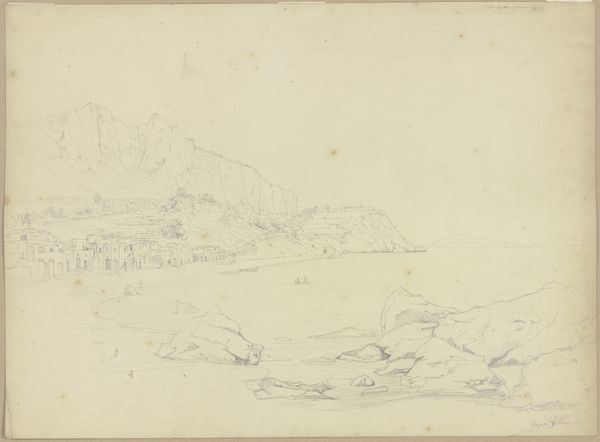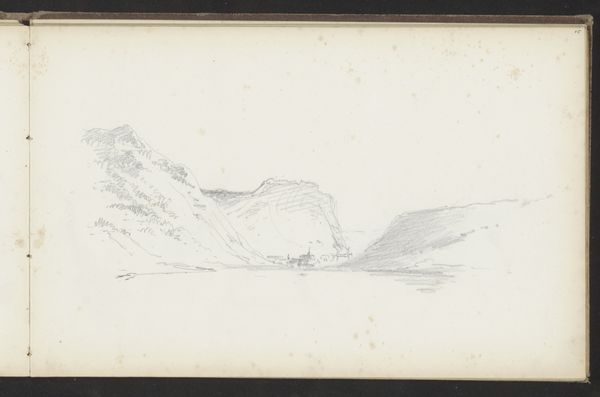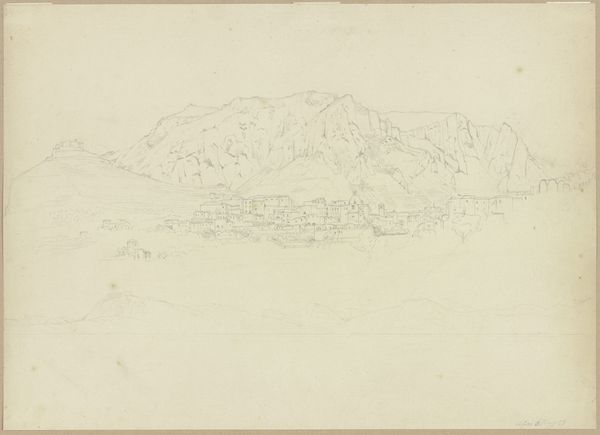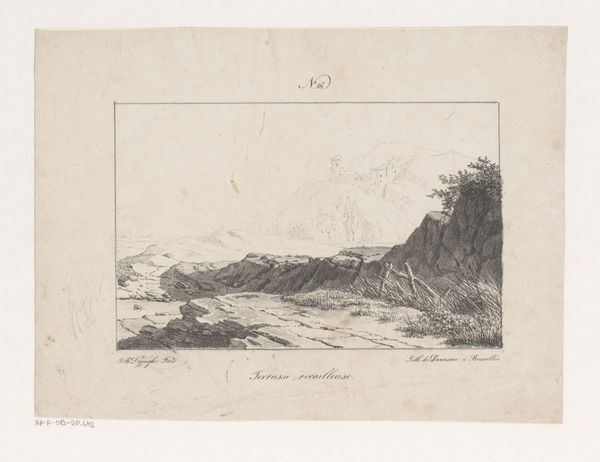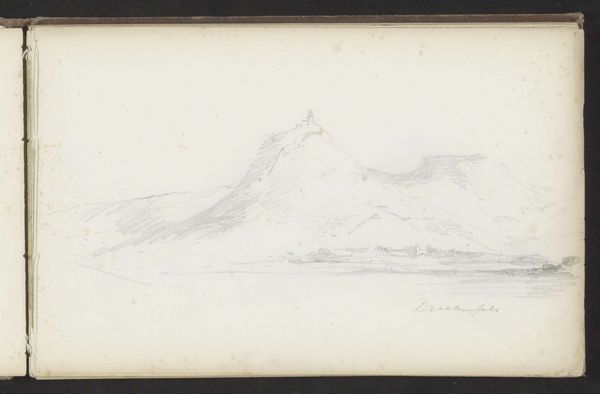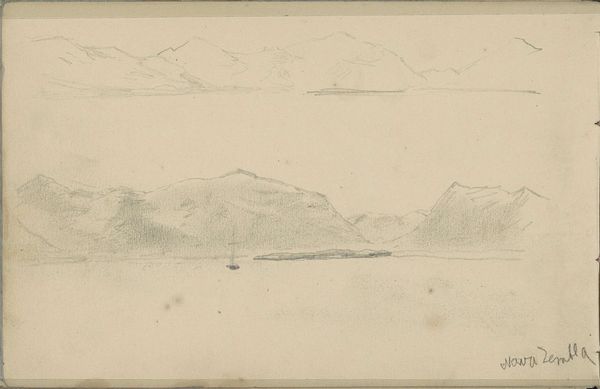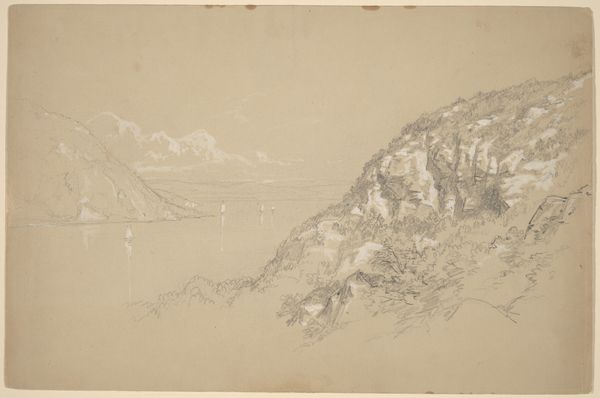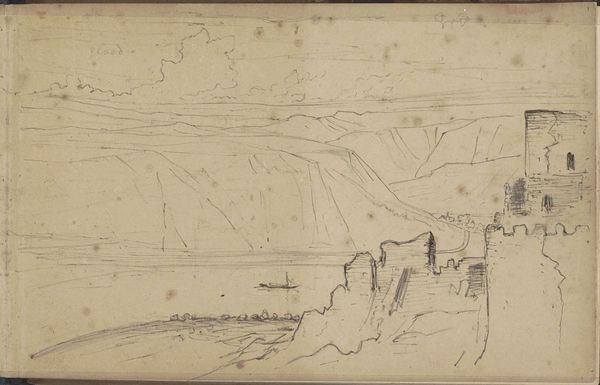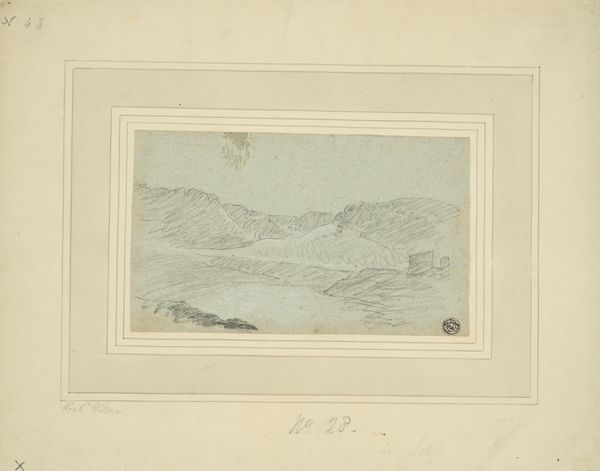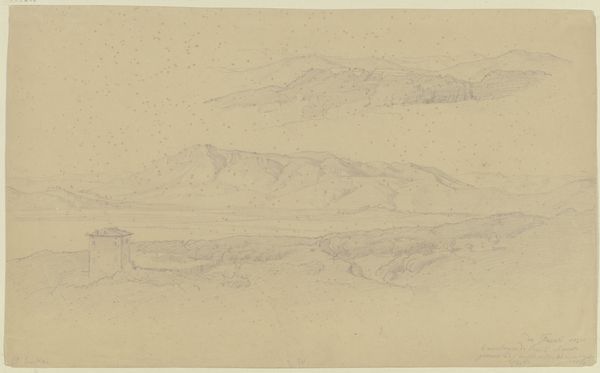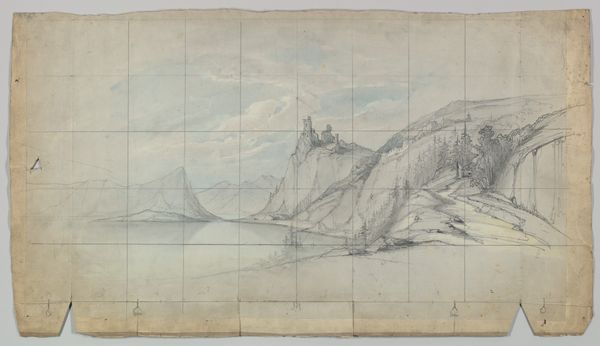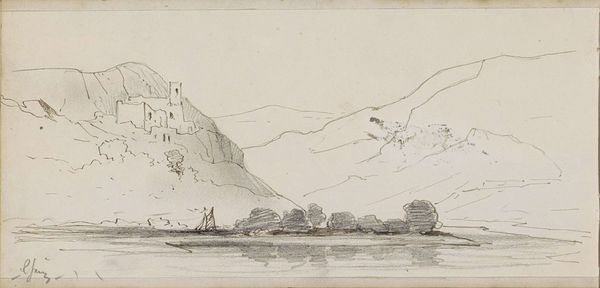
Copyright: Public Domain
Editor: Here we have Johannes Thomas's "Rocky coast of Capri," sketched in pencil around 1823. It has an airy, almost dreamlike quality, even with the ruggedness of the cliffs. What visual language strikes you most in this drawing? Curator: The image speaks volumes through its apparent simplicity. Notice how the rocky forms aren't just shapes; they're stoic witnesses. Think of Capri in 1823 – a locus for Romantic artists seeking untamed nature. The pencil lines, so delicate, capture a sense of sublime awe, that reverential fear mixed with wonder, that artists felt in the face of powerful nature. Do you sense that emotion being conveyed through the peaks? Editor: Absolutely, there's definitely a reverence. The cliffs loom, but the soft lines keep it from feeling threatening. What's interesting to me is how universal that feeling remains, even centuries later. Curator: Precisely. And this continuity, this emotional echo across time, is key. These forms, rendered so carefully, become symbols – of endurance, of the eternal struggle between land and sea. The light and shadow play on the rocks – what stories do those visual elements conjure? Editor: Stories of resilience, maybe? Of the constant shaping and reshaping that nature inflicts. Curator: I see that, yes! That enduring spirit then becomes a mirror for our own. These romantic landscapes invited viewers to project their inner worlds onto these grand settings. They still invite contemplation, allowing us to connect with something larger than ourselves. Editor: I never thought about landscape art as a kind of mirror before. It’s fascinating how much a simple sketch can communicate across time. Curator: Indeed. And the beauty lies in how those communications remain so incredibly personal, almost haunting.
Comments
No comments
Be the first to comment and join the conversation on the ultimate creative platform.
